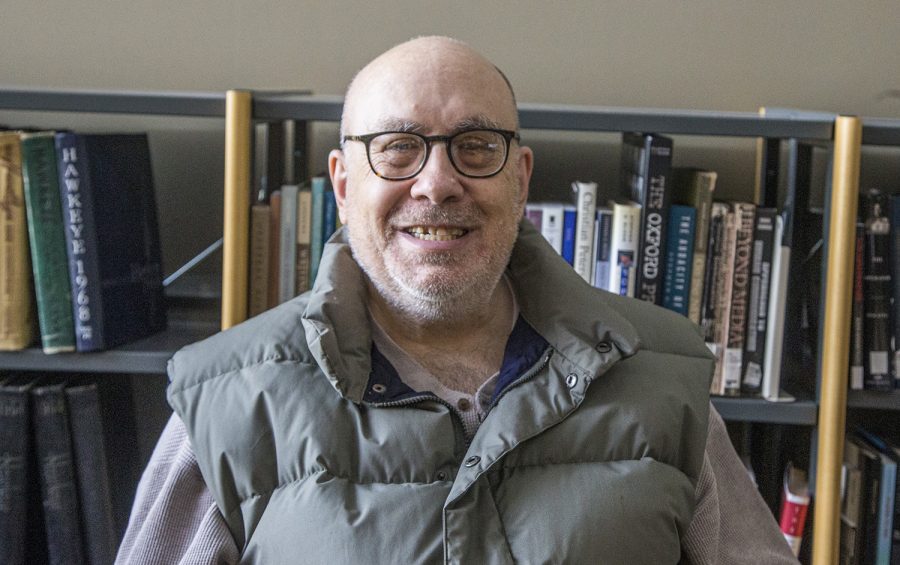Local Iowa City author tackles the struggles of life through the power of poetry
Sharing his raw and personal life story, local author Steven Anderson took 38 years to self-published his personal collection of writing, Journal to Narayama and Love Poems.
In Adler Journalism Building on Tuesday, Oct. 15, 2019 poet Steven Anderson Author of Journal to Narayama and Love Poems poses for a photo. Steven currently is living in Iowa City where he enjoys writing from his home.
October 17, 2019
Iowa City — the start, the middle, or perhaps even an end to many writers’ journeys in life. The city holds an unwavering attraction for literary inspiration, acting as the birthplace for a compilation of work, such as the book, Journal to Narayama and Love Poems by local author Steven Anderson.
Through poetry, journal entries, quotations, articles, and an essay, Anderson takes the reader on a 38-year-long journey of his life, beginning all the way back in 1978 and reaching until 2015. The writing shifts along the way, ebbing to the movement and flow of Anderson’s life as he travels from Iowa City to California to Europe, as well as the current of his mind.
The majority of the pieces in the beginning hook into a deep sense of angst and self-searching. Thus, as a soul-searching mind can be, there’s an immense amount of friction in these thoughts. One journal entry from page 23 states, “It is not possible to express existence. I wonder at times if I’m really here.” This existential thread weaves itself in ways throughout the rest of the story.
Traveling helped keep Anderson wondering about the world, and so his journal entries allow the readers a gateway to his foreign revelations. He expands beyond the simple framework of American culture, and in his writing incorporates small details or expressions in various languages of the countries he visits; however, there is a particular love for French.
Related: Children’s book illustrator Melissa Sweet showcases her craft to Iowa City
These wonderments and musings do find themselves darkly contrasted, yet linked, with the issues Anderson faces in his life. Having faced depression and a sense of alienation for most of his life, according to the author’s retrospective gaze, the writing subjects can dip into this emptier, isolated feeling of his mental illness.
The writing’s structure throughout the pieces, in comparison, takes a disquieted tone. Long winding thoughts dance around many great questions for the reader to digest. The flow of ideas can be very overwhelming in a sense that mimics rushing, abstract thoughts in anxiety.
The author addresses being hospitalized for his mental state, tackling it in a depressively-phrased, anxiously structured style to evoke a connection with those having undergone the same societal struggle. The titles of many poems states his presence in some form of a hospital or asylum, painting his emotional experience in mental health services in the ‘80s.
In spite of all his struggles, there is a sense of growth at the end when the book transitions though 14 years, jumping from 1999 to when he graduates college in 2013. This passage in time allows the end to incorporate Anderson’s most recent writing endeavors.
At the end, an older Anderson, now the one in charge of the story, admits to the struggles he had endured and that are seen in his writings in his youth; however, they are tinged with hopeful sentiments on life, such as a line from page 195: “I’m convinced we are here to make a difference, to make the world better.”
There is a heavy dosage of wisdom in the ending journals entries, offering a powerful message to those who face similar struggles. The message states to take care of yourself, to understand that aspects of mental health are not excuses, and one should express while one has time. The thread of existentialism weaves itself into those very last few words.
“Time flies,” Anderson said on page 224, “So make the most of it!”














